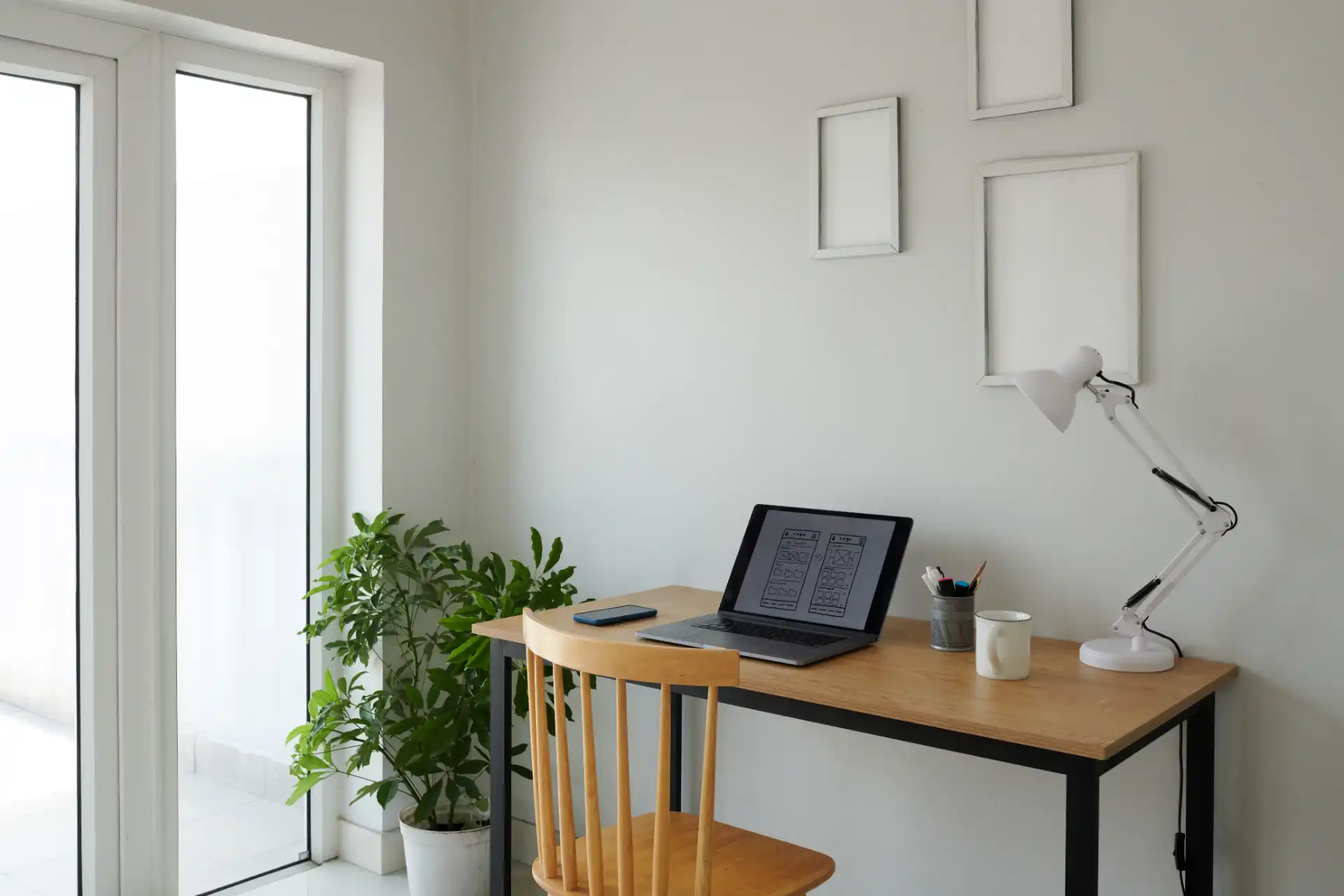Creating a comfortable and efficient home office doesn’t have to cost a fortune. With a few smart choices and some creative thinking, you can build a workspace that boosts focus, supports your health, and looks great—without overspending. This guide walks you through the essentials of a budget home office setup, with practical tips and affordable ideas.
1. Start with the Right Location
Choose a quiet corner or underutilized area in your home. A dedicated space—even if it’s small—helps create a clear boundary between work and relaxation.
Pro Tip: Use a room divider or bookshelves to visually separate your work area in shared spaces.
2. Repurpose Existing Furniture
Before buying anything new, look around your home. Dining tables, side tables, or unused dressers can often be transformed into functional desks. Add a chair with proper back support, and you’ve already got a head start.
3. Budget-Friendly Desk Options
If you do need to buy a desk, look for affordable models with storage or compact features. Online retailers like IKEA and local secondhand stores offer plenty of stylish, budget options under $100.
DIY Option: A sturdy tabletop and two filing cabinets can serve as an instant desk setup.
4. Ergonomic Comfort on a Budget
Good posture is essential. If you can’t afford a full ergonomic chair, try using a lumbar support cushion and adjusting your seat height with firm pillows or cushions. Ensure your screen is at eye level using books, stands, or even a shoebox.
Explore our guide on 10 Ergonomic Office Furniture Ideas for more affordable comfort upgrades.
5. Lighting Makes a Big Difference
Natural light is ideal, but if you’re in a darker room, use a desk lamp with adjustable brightness. Look for LED lamps with soft, warm tones to reduce eye strain during long work sessions.
6. Storage Solutions that Save Space
Get creative with storage by using wall shelves, baskets, or hanging organizers. Pegboards, stackable boxes, or under-desk drawers help reduce clutter and keep supplies within easy reach.
7. Add Personal Touches
Keep your workspace inspiring with a few decorative elements. A plant, framed quote, or colorful calendar can uplift your mood without costing much. These details make your workspace feel more inviting and personalized.
8. Keep Cables and Tech Organized
Use inexpensive cable clips or zip ties to prevent cords from tangling. Repurpose old containers to hold pens, chargers, or USB drives. A small power strip with surge protection is also a worthwhile investment.
9. Stick to Essentials
Don’t overbuy. Focus on your actual daily needs: a stable desk, a comfortable chair, reliable internet, and decent lighting. Everything else can be added gradually as your budget allows.
10. Upgrade Over Time
Start simple and build your office slowly. Keep an ongoing list of “nice-to-have” items you can purchase as funds become available or during seasonal sales.
Need tips for small space setups? Visit our guide on Small Office Design Tips.
Final Thoughts
A productive workspace doesn’t have to be expensive. With creativity and a focus on essentials, you can design a home office that helps you stay focused, comfortable, and motivated every day. Stick to what matters most, use what you already have, and make smart upgrades over time. Your wallet—and your back—will thank you.
For more budget home office setup tips, subscribe to our blog and follow us for weekly updates on design trends and office productivity hacks.


